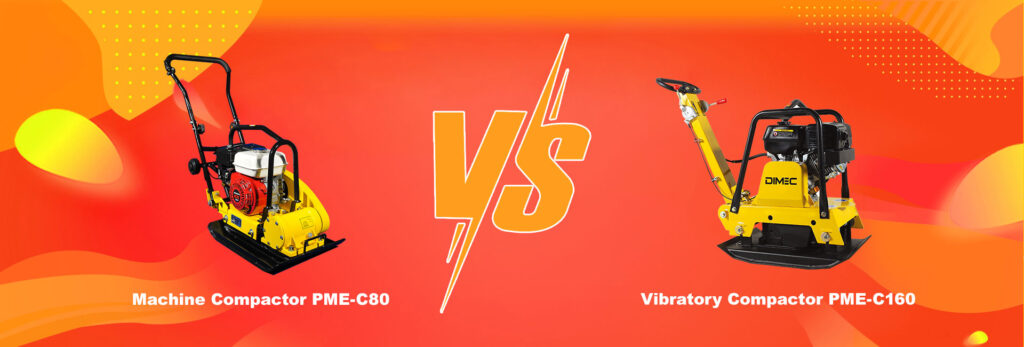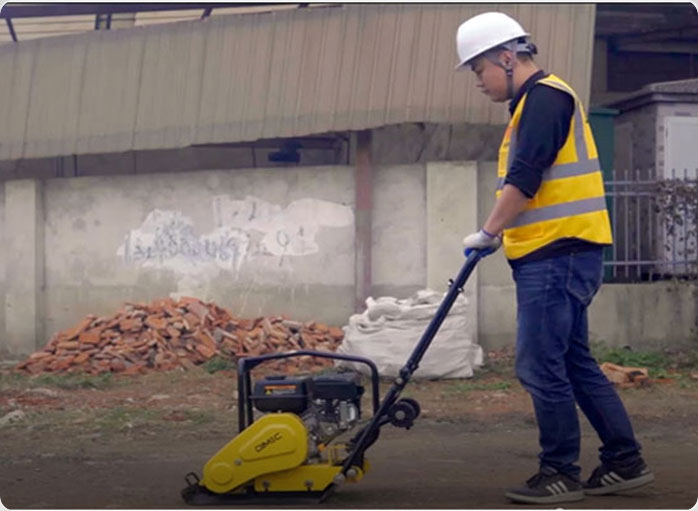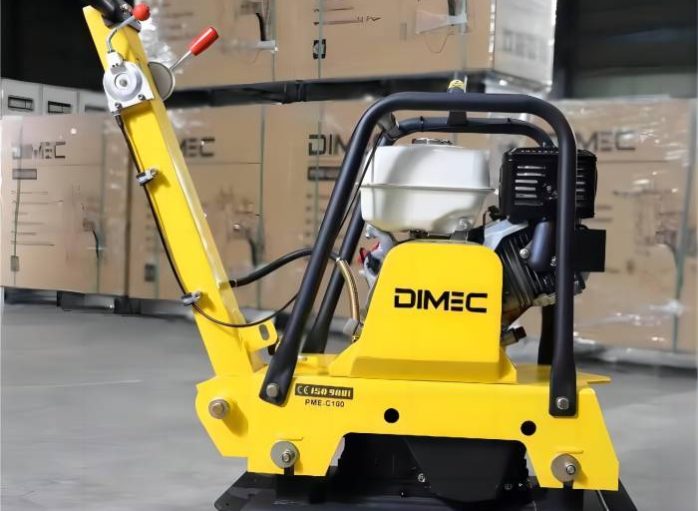Machine Compactor PME-C80 vs Vibratory Compactor PME-C160: Compactor Types & Core Specs
Home » Machine Compactor PME-C80 vs Vibratory Compactor PME-C160: Compactor Types & Core Specs

Table of Contents
When it comes to efficient compaction solutions, choosing the right equipment can be a game-changer. In this article, we dive deep into a comprehensive comparison of two advanced models: the Machine Compactor PME-C80 and the Vibratory Compactor PME-C160. Whether you’re a contractor, an engineer, or simply curious about modern compaction technology, this guide will walk you through every nuance and help you make an informed decision.
Introduction
Selecting the right compaction machine is like finding the perfect tool for your favorite hobby—it makes all the difference. Today, we’re comparing the PME-C80 and the PME-C160, two high-performance machines designed to deliver outstanding results in various construction and civil engineering projects. This article is packed with detailed insights, technical specs, user feedback, and much more. So, let’s jump right in!
Purpose of the Comparison
Have you ever wondered which compactor would best suit your project? By comparing these two models, we aim to highlight their strengths, weaknesses, and ideal applications, ensuring you find the one that best fits your needs.
Overview of Compaction Technology
Modern compaction technology is all about efficiency and precision. The PME-C80 and PME-C160 embody cutting-edge design principles, utilizing both traditional mechanical compaction and vibratory methods to maximize performance and durability. Ready to explore their inner workings? Let’s take a closer look.
Technical Specification
| Model | Machine Compactor PME-C80 |
|---|---|
| Engine | Honda / Robin / Loncin / Diesel engine |
| Engine type | Air-cooled, single cylinder, 4-stroke, petrol engine / diesel engine |
| Frequency [VPM] | 4200 |
| Centrifugal force [KN] | 15 |
| Plate size (LxW) [cm] | 64x42 |
| Max.compaction depth[cm] | 35 |
| Travel speed [m/min] | 25 |
| Max.inclination angle | 20° |
| N.W./G.W. [kg] | 80/85 |
| Package (LxWxH) [cm] | 75x46x58 |
| Model | Vibratory Compactor PME-C160 |
|---|---|
| Engine | Honda / Robin / Loncin / Diesel engine |
| Engine type | Air-cooled, single cylinder, 4-stroke, petrol engine / diesel engine |
| Frequency [VPM] | 4000 |
| Centrifugal force [KN] | 30 |
| Plate size (LxW) [cm] | 71x45 |
| Max.compaction depth[cm] | 60 |
| Travel speed [m/min] | 20 |
| Max.inclination angle | 20° |
| N.W./G.W. [kg] | 160/170 |
| Package (LxWxH) [cm] | 78x48x110 |
Product Overview: Machine Compactor PME-C80
The PME-C80 is engineered for robust performance. It combines power with reliability, making it an excellent choice for projects that demand steady, consistent compaction.
Background and Design Philosophy
The PME-C80 was designed with versatility in mind. Drawing on years of industry expertise, its developers focused on creating a machine that could handle both small-scale projects and larger, more demanding tasks. Its mechanical compaction system is ideal for applications where precision and controlled force are paramount.
Key Features and Benefits
- High Compaction Force: Ensures optimal soil stabilization.
- Robust Build: Constructed with high-quality materials for long-lasting performance.
- User-Friendly Interface: Simple controls that make it easy to operate, even for newcomers.
- Versatility: Adaptable to various project requirements, from road construction to foundation laying.
Product Overview: Vibratory Compactor PME-C160
On the other side of the spectrum is the PME-C160. Known for its innovative vibratory technology, this model is designed to deliver rapid compaction with minimal operator fatigue.
Background and Design Philosophy
The PME-C160 was created to meet the increasing demand for speed and efficiency in modern construction projects. Its vibratory mechanism is engineered to achieve superior soil compaction quickly, making it a favorite among professionals who need to meet tight deadlines.
Key Features and Benefits
- Rapid Compaction: Vibratory technology accelerates the compaction process.
- Energy Efficiency: Consumes less energy while delivering high performance.
- Ergonomic Design: Designed to reduce operator strain, improving overall productivity.
- Advanced Vibration Control: Allows for precise adjustments based on soil type and project demands.
Technical Specifications
A closer look at the technical details can reveal a lot about the capabilities of these machines. Here, we break down the specifications to help you understand what sets them apart.
PME-C80 Specifications
- Engine Power: Optimized for steady performance.
- Weight: Designed to balance mobility and stability.
- Compaction Force: High force output for deep compaction.
- Operating Speed: Calibrated for precision in various soil conditions.
- Fuel Efficiency: Engineered to optimize fuel consumption over long work periods.
PME-C160 Specifications
- Engine Power: Tailored for rapid vibratory performance.
- Weight: Slightly heavier to ensure enhanced stability during high-speed operations.
- Vibration Frequency: Adjustable to match different compaction requirements.
- Operating Speed: High-speed performance for quick results.
- Energy Consumption: Designed with modern energy-saving technologies.
Design and Build Quality
Understanding the build quality and design elements of each compactor is crucial in determining their long-term viability and maintenance requirements.
Structural Design and Material Quality
Both the PME-C80 and PME-C160 are built with robust materials that ensure durability and resilience. However, there are distinct design differences:
- PME-C80: Focuses on a more traditional, heavy-duty construction that can withstand prolonged use.
- PME-C160: Incorporates a lighter, more modern frame that leverages advanced alloys and composites, resulting in reduced weight without compromising strength.
Durability and Performance under Load
The PME-C80 is tailored for heavy-duty projects where consistent, deep compaction is required, while the PME-C160 is ideal for projects demanding rapid yet effective soil stabilization. When subjected to continuous use, the differences in design directly impact how each machine performs under prolonged load conditions.
Operating Mechanisms
Understanding how these machines operate provides clarity on why one might be a better fit for certain projects than the other.
Compaction Technology Behind PME-C80
The PME-C80 employs a mechanical compaction system that applies steady pressure over time. This system is particularly effective in scenarios where the soil needs to be compacted gradually to ensure a uniform base. Think of it as the slow-cooker of compaction—steady, reliable, and consistent.
Vibration Technology Behind PME-C160
The PME-C160 uses high-frequency vibrations to achieve compaction. The vibratory mechanism loosens and then re-compacts the soil rapidly, which not only saves time but also enhances the overall density of the compacted area. Imagine it as a powerful mixer that quickly blends ingredients to achieve the perfect consistency.
Performance Comparison
How do these machines stack up against each other in real-world performance? Let’s compare their efficiency, speed, and operational costs.
Efficiency and Speed
- PME-C80: Offers consistent performance ideal for projects that require a gradual and thorough compaction process. Its methodical approach may take a bit longer but ensures every inch of soil is perfectly compacted.
- PME-C160: Delivers rapid results thanks to its vibratory mechanism. This model is perfect when time is of the essence, allowing for quick turnaround times on large-scale projects.
Energy Consumption and Operational Costs
Energy efficiency is a critical factor in today’s market. The PME-C80, with its traditional mechanical system, may consume slightly more fuel over long operations. In contrast, the PME-C160’s advanced vibratory technology is designed to optimize energy use, which can translate into lower operational costs over time.
User Experience and Control
The way a machine feels in operation can have a huge impact on productivity and overall satisfaction. Let’s explore the user experience for both models.
Ease of Operation and Control Systems
The control interface of the PME-C80 is straightforward and designed with ease of use in mind. Its simple dashboard allows operators to focus on the task without being bogged down by overly complicated settings. On the other hand, the PME-C160 offers a more modern control system with adjustable settings that let you tweak vibration frequency and speed on the fly—ideal for those who appreciate a bit of customization in their workflow.
Ergonomics and Operator Safety
Operator safety is paramount in any heavy machinery operation. The PME-C80 is built with a robust and stable frame that minimizes the risk of accidents, while the PME-C160 incorporates ergonomic seating and controls designed to reduce fatigue during long hours of work. Both models come equipped with safety features, but the vibratory compactor’s modern design gives it a slight edge in user comfort.
Applications and Suitability
Choosing between the PME-C80 and PME-C160 ultimately depends on the specific requirements of your project. Here’s a breakdown of the best applications for each model.
Best Use Cases for PME-C80
- Road Construction: Ideal for projects requiring a solid, uniformly compacted base.
- Foundations: Perfect for building foundations where precision and gradual pressure are key.
- Heavy-Duty Compaction: Suited for terrains that demand consistent, high-pressure compaction over longer durations.
Best Use Cases for PME-C160
- Quick Turnaround Projects: When time is critical, the vibratory mechanism offers a rapid compaction solution.
- Large-Scale Construction: Efficient for covering vast areas quickly without sacrificing compaction quality.
- Urban Development: Its modern design and energy efficiency make it a popular choice in environments where noise and emissions are regulated.
Safety and Maintenance
Ensuring that your compactor remains in top condition is as important as its initial performance. Let’s look at how these machines address safety and maintenance.
Integrated Safety Features
Both machines come equipped with a range of safety features. The PME-C80 includes reinforced safety guards and emergency shutdown mechanisms, while the PME-C160 offers advanced sensor systems that monitor vibration levels and operational conditions to prevent overuse or damage. These features not only protect the operator but also extend the lifespan of the equipment.
Routine Maintenance and Upkeep
Maintenance is the key to longevity. The PME-C80’s traditional design means that its components are often easier to access and service, making routine maintenance relatively straightforward. The PME-C160, with its more complex vibratory system, might require a bit more technical know-how, but its design also incorporates self-diagnostic tools to alert operators when maintenance is needed. This proactive approach helps reduce downtime and keeps your projects on track.
Pricing and Value
Investing in heavy machinery is a significant decision. Understanding the cost implications and long-term value of each model can help you make the best choice.
Cost Considerations and Investment Return
- PME-C80: Typically, a machine with a traditional build may have a lower upfront cost, making it attractive for projects with budget constraints. However, its operational costs might be slightly higher over time due to fuel consumption.
- PME-C160: Although the initial investment might be higher, the energy-efficient design and rapid operation can lead to lower overall costs. Its ability to complete tasks faster may also result in significant savings in labor and operational time.
Long-Term Value Proposition
Both models offer excellent long-term value, but your specific needs will dictate which one delivers a better return on investment. The PME-C80 is built for reliability and durability, while the PME-C160 offers cutting-edge technology designed to maximize efficiency and reduce costs over time.
Customer Reviews and Market Feedback
Real-world feedback from users provides invaluable insight into how these machines perform beyond the specifications.
Real-World Insights for PME-C80
Operators of the PME-C80 often praise its reliability and robust build quality. Users appreciate its consistent performance and straightforward controls, which contribute to a smoother workflow on demanding projects.
Real-World Insights for PME-C160
Users of the PME-C160 enjoy the machine’s speed and innovative vibratory mechanism. Feedback highlights its energy efficiency and modern control systems as significant advantages, particularly in fast-paced construction environments where every minute counts.
Comparative Analysis Summary
Now that we’ve delved into every aspect of both machines, let’s summarize the key differences and advantages.
Side-by-Side Pros and Cons
PME-C80 Pros:
- Steady, reliable compaction
- Robust build and durability
- Simple and user-friendly interface
- Ideal for heavy-duty, precision tasks
PME-C80 Cons:
- Slower operational speed compared to vibratory models
- Potentially higher fuel consumption over prolonged use
PME-C160 Pros:
- Rapid compaction through advanced vibratory technology
- Energy-efficient and cost-effective in the long run
- Modern control system with ergonomic design
- Well-suited for projects requiring quick turnaround
PME-C160 Cons:
- Higher initial investment cost
- More complex maintenance due to advanced features
Which Model Fits Your Needs?
If your projects demand steady, controlled compaction with a focus on durability, the PME-C80 is your go-to option. Conversely, if speed, energy efficiency, and modern features are at the top of your list, the PME-C160 stands out as the ideal choice. The decision ultimately depends on your project specifications, budget, and the operational environment.
Conclusion
Choosing between the Machine Compactor PME-C80 and the Vibratory Compactor PME-C160 boils down to understanding your specific needs. Both machines offer exceptional performance, but they cater to different operational demands. The PME-C80 provides a traditional, reliable compaction method perfect for projects that require gradual, controlled force, while the PME-C160 leverages modern vibratory technology to deliver rapid, efficient results. By evaluating technical specifications, operational costs, user experience, and market feedback, you can confidently select the compactor that best aligns with your project goals.
Whether you’re working on road construction, foundation laying, or urban development, these compactors are engineered to get the job done effectively. In the end, it’s not just about the machine—it’s about ensuring that every part of your project is built on a solid, stable foundation.
FAQs
What is the primary difference between the PME-C80 and PME-C160?
The PME-C80 uses a mechanical compaction system for steady, controlled performance, while the PME-C160 employs advanced vibratory technology to achieve rapid compaction.Which machine is more energy-efficient?
The PME-C160 is designed with modern energy-saving features, making it more energy-efficient compared to the traditional design of the PME-C80.Can these machines be used for large-scale construction projects?
Yes, both models are suitable for large-scale projects. The PME-C80 is ideal for projects requiring consistent, gradual compaction, whereas the PME-C160 is perfect for projects that demand quick turnaround times.How do maintenance requirements compare between the two models?
The PME-C80 generally features simpler maintenance due to its traditional build, while the PME-C160 might require more technical expertise due to its advanced vibratory systems. However, both are designed for longevity and ease of upkeep.Which machine should I choose for urban development projects?
For urban projects where speed and efficiency are critical, the PME-C160 often emerges as the better choice, thanks to its rapid compaction and energy-efficient design. However, if your project demands high precision and a robust build, the PME-C80 remains an excellent option.
Plate Compactor X Tamping Rammer X Road Roller
You May Also Like
Portable Generator Powerhouse: 15 Must-Know Insights Before You Buy
The Ultimate Guide to Finding a Reliable Tamping Rammer Supplier
Tamping Rammer vs. Hand Compaction: Which is More Effective?
The Advantages of Double Drum Road Rollers Over Single Drum
Asphalt Compactor Mastery: 21 Essential Insights for Efficient Roadwork
How Does a Rammer Tool Compare to Other Compaction Equipment?
Preferred Brands of Engineering Compaction Equipment
Three Core Product Lines for Efficient Construction

Plate Compactor
Plate Compactors stand as our flagship products, featuring a comprehensive range from 40KG to 750KG to accommodate diverse project requirements.

Tamping Rammer
Tamping Rammers are available in 9 models (32kg-90kg), equipped with premium engines like Honda, Robin, and Loncin for enhanced fuel efficiency and extended durability.

Road Roller
Road Rollers deliver precision compaction for asphalt, soil, and gravel in road projects. Our lineup spans 0.3-ton to 5.5-ton capacities, engineered for high performance and superior stability across all terrains.

